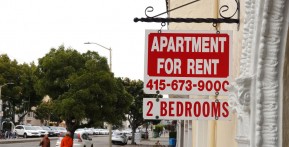The housing market has seen some gains in the first six months of the year, but the battle is not yet over. The housing outlook for the next period is all about affordability and availability. Two key factors that will affect the second half of 2015.
Demand for houses is still on the rise, but supply of homes will continue to be an issue. The biggest story for 2015, states Forbes, is the lack of inventory. Despite the increase in demand, developers are not building as many new houses as expected. Recorded groundbreakings as of May stood at an annual rate of 1.036 million, according to a report from the U.S. Commerce Department, well below the 1.5 million needed to get supply back in line with demand.
Another factor affecting supply, reports CNBC, is that homebuilders are hampered by tight credit and a shortage of skilled workers. Builders are not "back into the speculative game," stated the report, and building only for contract buyers. The second half will still present gains in new home construction, but not to a level that will address supply concerns.
Rising mortgage rates as well as the increase in home prices will push home buyers towards home rentals. According to CNBC, the last six months of the year won't see a change in this trend. And while this is a plus for landlords, high rental rates will be a concern for renters.
Although it is cheaper to own rather than rent, high mortgage rates are affecting potential home buyers' decision to purchase a house. According to real estate data firm Trulia, buying a home is cheaper than renting by 38 percent on a national level. Although given that real estate is local, rates and conditions vary widely, reports Forbes. Still, potential home owners will not be putting forward offer letters for homes until mortgage rates hit 10.6 percent, Trulia predicts.
Prices of homes will also continue to rise, with projected gains ranging from 3 percent to 8 percent, reports Forbes. Latest data from S&P/Case-Shiller showed a 4.1% year-over-year increase for single-family home prices in March. On the other hand, the National Association of Realtors reported the median existing-home sales price up 8.9% over the previous year in April. Trulia's chief economist Selma Hepp predicts that rates will be higher than anticipated. "I think we are looking more at 7% to 8%," said Hepp.
Sharper focus on mortgage credit availability will also be a factor for the second half of the year. New regulations has made lending institutions even more careful, however this presents an opportunity for individual lenders as they tend to be more flexible with credit.













